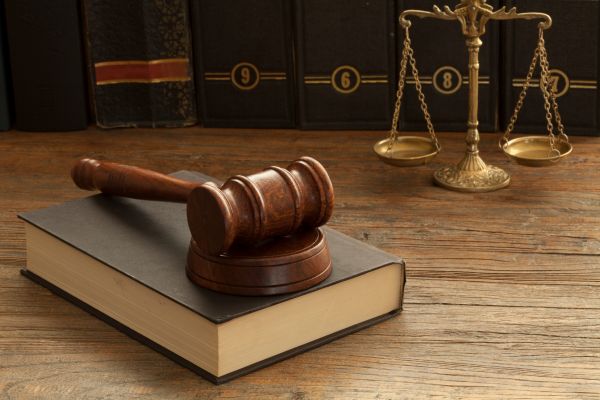Case:Shah Faesal & Ors. v. Union of India
Citation: (2024) 1 SCC 1
Court: The Supreme Court of India
Bench: Hon’ble Dr. D.Y. Chandrachud, CJI; Hon’ble Sanjay Kishan Kaul, J; Hon’ble Sanjiv Khanna, J; Hon’ble B.R. Gavai, J; Hon’ble Surya Kant, J.
Date Of Judgement: December 11, 2023
1. Facts
The present case, decided by way of consolidation of petitions under Article 32 of the Indian Constitution[1], stems from a sequence of executive and legislative steps taken by the Union Government fundamentally restructuring the constitutional framework governing the erstwhile State of Jammu and Kashmir (J&K). The judicial challenge was made by proceedings starting with the issuance of a Presidential Proclamation under Article 356 on December 19, 2018, declaring President’s Rule in the state after the prorogation of its Legislative Assembly.[2] This movesde facto transferred the legislative authority of the State to the Parliament of India. Thereafter, on August 5, 2019, the President, acting under Article 370(1)(d), issued the Constitution (Application to Jammu and Kashmir) Order, 2019 (C.O. 272)[3]. The landmark executive order substituted the earlier 1954 Presidential Order, extended the whole gamut of the Indian Constitution to J&K, and, most significantly, amended Article 367, the interpretative clause. The aforesaid amendment held that the words “Constituent Assembly of the State” in the proviso to Article 370(3) would now mean the “Legislative Assembly of the State.” [4]At the same time, the Rajya Sabha, acting in its delegated role as the J&K State Legislature, passed a recommendation in favour of revocation of Article 370. In pursuance of the recommendation, the President issued a follow-up proclamation, C.O.273. The repeal of Article 370 rendered it inoperative on August 6, 2019[5]. Concurrently, Parliament passed the Jammu and Kashmir Reorganisation Act, 2019, dividing the state into two separate Union Territories: Jammu and Kashmir, which was endowed with a legislative assembly, and Ladakh, which was not.[6]Claiming that these actions represented an unconstitutional perversion of federalism and democratic ideals, a diverse group of petitioners filed legal action before the Supreme Court.
2. Issues Raised
The Constitution Bench articulated the following principal legal questions for judicial determination: [7]
- Whether the provisions of Article 370 of the Constitution were of a temporary nature or, conversely, had acquired a status of permanence following the dissolution of the Constituent Assembly of Jammu and Kashmir in 1957?
- Whether the President’s exercise of power under Article 370(1)(d) to issue C.O. 272, which consequently modified the interpretive framework of Article 370(3), constituted a valid exercise of constitutional authority or represented a form of unconstitutional amendment?
- Whether the Parliament of India, while acting in the capacity of the State Legislative Assembly during the subsistence of a Proclamation under Article 356, was constitutionally competent to recommend the abrogation of Article 370 under the proviso to clause (3) thereof?
- Whether the Jammu and Kashmir Reorganisation Act, 2019, which effected the conversion of a State into Union Territories, is constitutionally valid, with particular regard to the permissible scope of Parliament’s legislative power under Article 3 of the Constitution? [8]
3. Contentions
Arguments on behalf of the Petitioners:
The petitioners advanced the primary contention that the actions of the Union constituted a colourable exercise of power and amounted to a fraud upon the Constitution.The core of their argument was that Article 370 was not a temporary constitutional provision, but that it had, over the course of practice, become an essential characteristic of the asymmetric federalism that characterized the unique constitutional relationship between the Union of India and J&K. They claimed that once the J&K Constituent Assembly was disbanded during 1957 and the particular method of abrogating Article 370 in clause (3)requiring a recommendation from the Constituent Assemblywas rendered defunct, as such, this too was an implicit legal entrenchment of Article 370’s temporary status. And, they argued further, the President’s power under Article 370(1)(d) was limited to applying existing constitutional provisions to J&K; he could not hijack Article 370 itself through an amendment and change the clause that would allow for it to be interpreted. They claimed that to do so, was an amendment by stealth, and therefore was not permitted. Most seriously, the petitioners argued that invoking such an extraordinary, far-reaching constitutional change in the context of President’s Rule was a serious threat to democracy, federalism, and the very basic structure of the Constitution, as it would rightfully refer to those challenges, how would such actions escape rationale as an ultimate disregard for the expressly stated preferences of elected representatives and an attempt to effectively remove the legitimate authority of the Government of Jammu and Kashmir. The Reorganisation Act was consequently assailed as being ultra vires Article 3, which, in their interpretation, empowers Parliament to reorganise States but not to extinguish their statehood by demoting them to centrally-administered Union Territories.
Arguments on behalf of the Respondent (Union of India):
Conversely, the Union of India asserted that Article 370 was, by its explicit textual formulation, historical context, and placement within Part XXI of the Constitution, an inherently temporary and transitional provision designed to facilitate the progressive and complete integration of J&K into the Indian Union. Advocacy was made that the President’s power under Article 370(3) was not extinguished by the dissolution of the J&K Constituent Assembly and that the power to recommend abrogation could be lawfully exercised by any successor body. The issuing of C.O. 272 was justified as a valid and plenary exercise of the President’s power to give effect to the Constitution of India in J&K. They argued that any period of President’s Rule or Totalitarian rule could arguably mean that the functions of the legislative assembly of the state were legally vested in Parliament and that the Parliament was legally entitled to make a recommendation on the abrogation of Article 370, which was not constitutionally accountable. The union asserted that any iota of sovereignty that J&K may have had was completely surrendered and irrevocably to the Dominion of India at the time of signature of the Instrument of Accession. Lastly, it was pointed out that Article 3 provides Parliament with wide-ranging and plenary powers to change the boundaries of States, their names, and status, and specifically to convert States into Union Territories – particularly in the interests of national security and integration.
4. Rationale Of The Court
The unanimous verdict, authored by Hon’ble Chief Justice Dr. D.Y. Chandrachud, affirmed the constitutionality of the Union’s actions, predicated upon a detailed and multi-faceted rationale. The Court conclusively determined that Article 370 was unequivocally a temporary provision, a conclusion derived from a textual analysis of the Article, its accompanying marginal note, and its classification within Part XXI of the Constitution, which is explicitly designated for “Temporary, Transitional and Special Provisions.” [9]The judgment reasoned that the provision was conceived as a constitutional mechanism to facilitate the gradual integration of J&K into the Union, rather than to establish a permanent, distinct constitutional status. Accordingly, the Court rejected the petitioners’ assertion that the provision had attained permanence following the dissolution of the State’s Constituent Assembly, holding that the power to abrogate it had not been extinguished. Furthermore, the Court affirmed that the President’s power under Article 370(1)(d) was plenary in nature and could be exercised to its fullest extent to apply the Indian Constitution. The issuance of C.O. 272, which modified Article 367 for the purpose of interpreting Article 370, was held not to be a surreptitious amendment but a valid exercise of this power. A pivotal element of the Court’s reasoning was its interpretation of governmental powers during President’s Rule. It held that when a Proclamation under Article 356 is operative, Parliament is competent to exercise the powers of the State Legislature, and no constitutional prohibition exists to prevent it from making recommendations of a permanent or irreversible character, thereby distinguishing the present case from the principles articulated in S.R. Bommai.[10]Finally, concerning the validity of the Reorganisation Act, the Court adopted a position of judicial restraint. It took on record the Solicitor General’s solemn assurance that the statehood of Jammu and Kashmir would be restored and that its current status as a Union Territory was a transient arrangement. In light of this executive submission, the Court deemed it unnecessary to render a definitive adjudication on the broader constitutional question of whether Parliament possesses the power under Article 3 to convert a State into a Union Territory, thereby leaving this significant legal issue unresolved. [11]
5. Judgement
In its final and unanimous verdict, the Supreme Court delivered a conclusive pronouncement regarding the constitutional status of Jammu and Kashmir. The Court held that the abrogation of Article 370 of the Constitution of India, effected through the issuance of Presidential Orders C.O. 272 and C.O. 273, was constitutionally valid. It further held that Article 370 was intrinsically a temporary provision, and the President possessed the authority to declare it inoperative. The Court unequivocally affirmed that the erstwhile State of Jammu and Kashmir retained no element of internal sovereignty subsequent to its accession to the Union of India. Consequently, the Jammu and Kashmir Reorganisation Act, 2019, which bifurcated the state into two Union Territories, was also upheld as valid. In a significant directive aimed at the restoration of democratic processes, the Court instructed the Election Commission of India to undertake all necessary measures to conduct elections for the Legislative Assembly of the Union Territory of Jammu and Kashmir by September 30, 2024, and urged the Union Government to facilitate the restoration of statehood at the earliest opportunity.[12]
6. Defects Of Law
The verdict gives a clear answer regarding the constitutional position of Jammu and Kashmir but simultaneously raises important questions of jurisprudence which need to be scrutinized carefully.
To begin with, questions of constitutional legality and the principle of colourable legislation loom large with the Court’s approval of the procedural approach to abrogation. Using Article 370(1)(d) to amend Article 367, which thereby altered the meaning of a substantive condition precedent in Article 370(3), could be seen as a “constitutional sleight of hand.” [13]Arguably, such a more instrumentalist reading allowed the executive to bypass the specific though arguably defunct amending process contained in Article 370 and, at the same time, perhaps slightly weakened the principle of constitutional morality that required that powers should be exercised in accordance not only to the text but the spirit of the Constitution.
Secondly, the ruling’s authorization of Parliament’s exercise of State Legislature powers while acting during President’s Rule to make irreversible, structural alterations poses what could be characterized as a serious risk to India’s federal structure. Article 356 is designed to be an exceptional and temporary measure to restore constitutional machinery, not a mechanism for the purposeful destruction of the constitutional identity of a State.[14] By upholding the dual role of Parliamentas the Legislature of a State when it gives “nod,” to the Union’s proposalsthe Court arguably stopped short of creating meaningful judicial safeguards against the potential abuses of emergency powers, thereby, theoretically exposing every State to the possibility of being fundamentally reorganized by the central government.
Thirdly, the Court’s decision to abstain from a definitive ruling on the primary question of whether Article 3 permits the conversion of a State into a Union Territory represents a significant jurisprudential lacuna. By relying on the executive’s assurance regarding the future restoration of statehood, the Court arguably abdicated its fundamental duty to interpret a critical provision that pertains to the existence and identity of States within the federal framework.[15] This leaves a vital aspect of federalism in a state of ambiguity, subject to the political exigencies of the executive, thereby potentially diminishing the constitutional protection afforded to States against unilateral central action.
7. Inference
The judgment in Shah Faesal v. Union of India represents a jurisprudential inflection point in Indian constitutional history, signalling a decisive shift towards a more centralized model of governance.It provides constitutional legitimacy to the total incorporation of Jammu and Kashmir into the Indian Union, thus placing the demands of national security and territorial integrity ahead of the value of asymmetric federalism and regional self-rule which had been constitutionally guaranteed for over seventy years.
The ruling places an emphasis on parliamentary supremacy and adds a broad interpretation of executive power, particularly while the President’s Rule is in operation. If in doing so, it does highlight fundamental and ongoing worries about the potential reversal of democratic processes and delicate federal balance. The potential legacy of this ruling may be twofold: it solves a highly contentious and legally complex sliver of Indian constitutional law with a declaration of Union will, but also initiates new and necessary conversations about the boundaries of constituent power, the inviolability of federal compacts, and the role of the Judiciary as the ultimate Judges of the Fundamental features of the Constitution. The actual legacy of the ruling will ultimately depend on the extent to which the promise of restoration of statehood and democracy in Jammu and Kashmir is fulfilled, and is predicated on a considerable element of this ruling.
[1]INDIA CONST. art. 32.
[2]INDIA CONST. art. 356.
[3]INDIA CONST. art. 370, cl. 1.
[4]The Constitution (Application to Jammu and Kashmir) Order, 2019, C.O. 272 (Aug. 5, 2019).
[5]Declaration under Article 370(3) of the Constitution, C.O. 273 (Aug. 6, 2019).
[6]The Jammu and Kashmir Reorganisation Act, 2019, No. 34, Acts of Parliament, 2019.
[7]In re Article 370 of the Constitution (Shah Faesal v. Union of India), (2024) 1 SCC 1, ¶ 12.
[8]INDIA CONST. art. 3.
[9]INDIA CONST. part XXI.
[10]Shah Faesal, (2024) 1 SCC 1, ¶ 348; See also S.R. Bommai v. Union of India, (1994) 3 SCC 1.
[11]Id. at ¶ 475.
[12]Id. at ¶ 477.
[13]INDIA CONST. art. 367.
[14]See S.R. Bommai v. Union of India, (1994) 3 SCC 1.
[15]Shah Faesal, (2024) 1 SCC 1, ¶ 475.
Author Name: Dewang Agrawal, NMIMS Kirit P. Mehta School of Law






